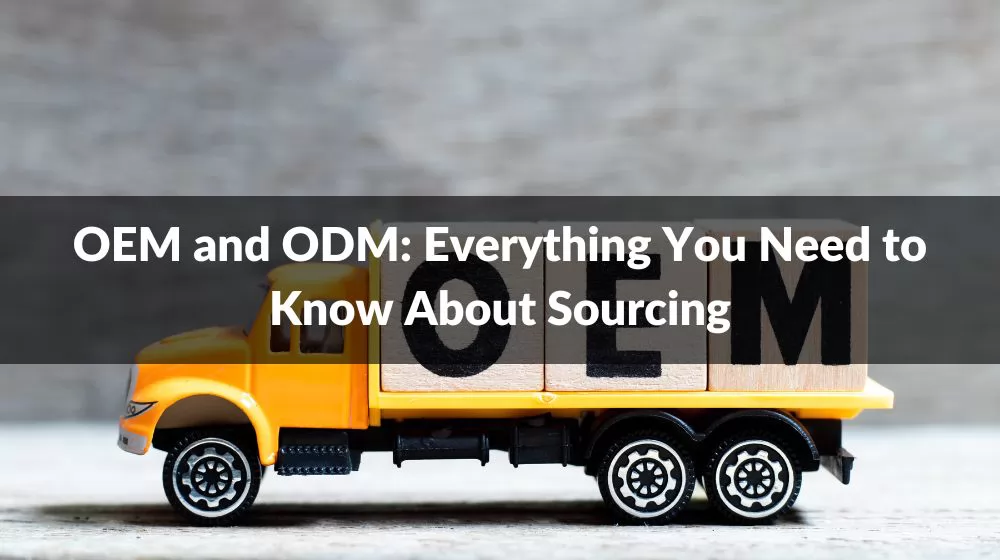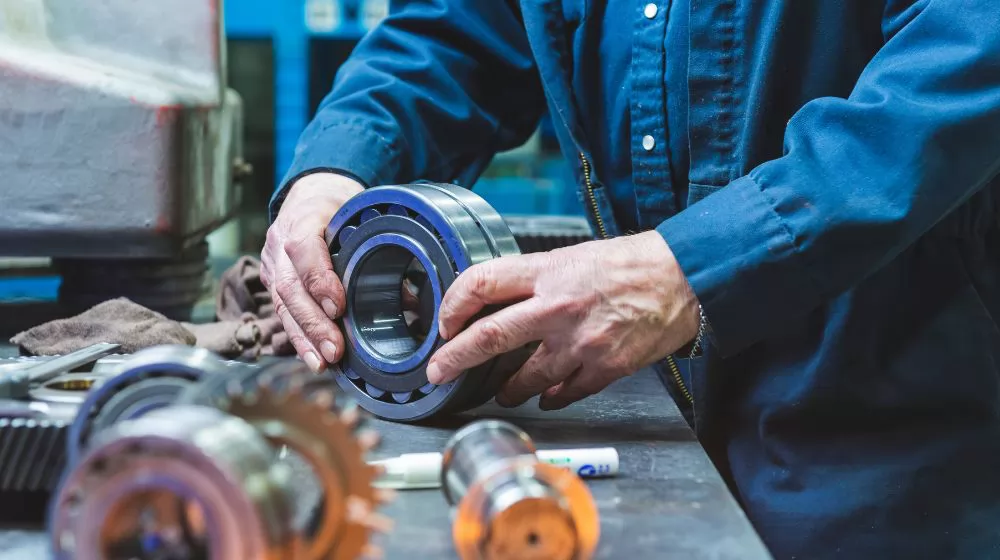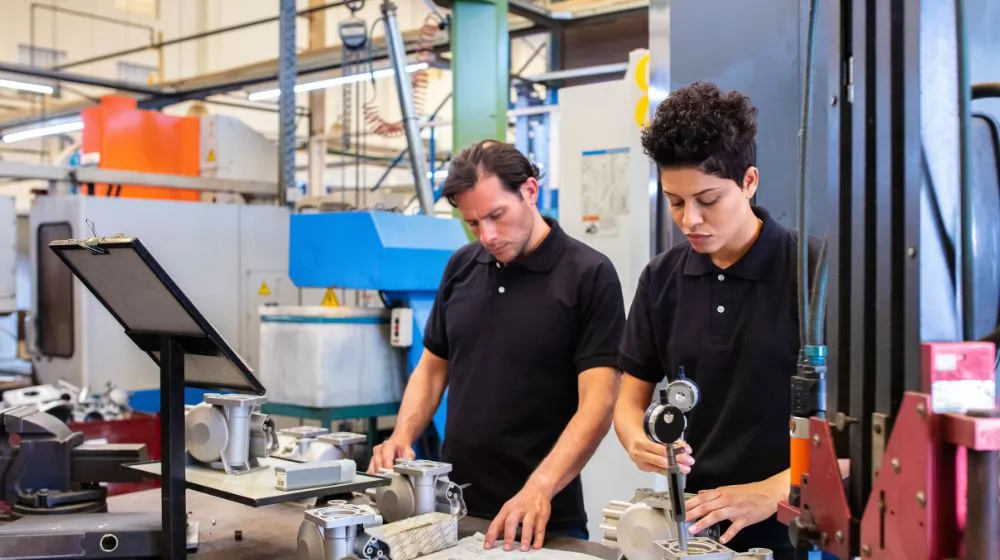
In the dynamic landscape of manufacturing and product development, the concepts of Original Equipment Manufacturer (OEM) and Original Design Manufacturer (ODM) play a pivotal role in shaping sourcing strategies. As businesses strive for efficiency, customization, and market competitiveness, understanding the nuances of OEM and ODM becomes imperative. This article delves into the intricacies of OEM and ODM, offering a comprehensive guide to businesses seeking clarity on these sourcing models. From the importance of procurement to the advantages and disadvantages of each model, we embark on a journey to demystify the world of OEM and ODM.
Importance of Procurement
In the intricate web of manufacturing and product development, the significance of procurement cannot be overstated. Procurement is the strategic process of sourcing and acquiring goods and services, wielding considerable influence over the quality and cost-effectiveness of the final product. This crucial business function extends its reach into various industries, playing a pivotal role in shaping the competitive landscape.
For companies engaged in the manufacturing sector, the terms OEM (Original Equipment Manufacturer) and ODM (Original Design Manufacturer) emerge as key players in the procurement arena. A comprehensive understanding of these concepts is essential for businesses aiming to optimize their sourcing practices and gain a competitive edge in the market. Let's delve deeper into the realms of OEM and ODM, exploring their nuances and implications in the world of procurement.

What is OEM?
Original Equipment Manufacturer (OEM) is a business model wherein a company specializes in producing components or products that are then utilized by another company. These products are sold under the purchasing company's brand name, giving the impression that the purchasing company itself has manufactured or designed the product. In this arrangement, the purchasing company typically provides specifications and requirements, and the OEM undertakes the production process accordingly. The OEM, in essence, acts as a behind-the-scenes manufacturer, contributing to the creation of products without directly engaging in the end-user sales process.
OEM Main Features
The OEM (Original Equipment Manufacturer) business model is characterized by several key features that distinguish it within the realm of manufacturing and product development.
Customization: A prominent feature of OEM is the ability to customize products according to the specific requirements and design preferences of the purchasing company. This tailoring allows businesses to align the manufactured goods with their unique brand identity and market positioning.
Brand Recognition: Products produced under the OEM model are marketed and sold under the brand name of the purchasing company. This brand recognition is crucial for maintaining consistency in the market and establishing a strong connection with consumers.
Design Control: In the OEM relationship, the purchasing company retains control over the design, features, and functionalities of the product. This level of control ensures that the final product meets the standards and expectations set by the purchasing company.
Understanding these main features is essential for businesses considering or engaged in OEM partnerships, as it provides insight into the dynamics of customization, branding, and design control inherent in this collaborative manufacturing approach.
OEM Advantages and Disadvantages
The OEM (Original Equipment Manufacturer) business model comes with its set of advantages and disadvantages, influencing the decision-making process for companies navigating the complex landscape of manufacturing and procurement.
Advantages:
Brand Control: The purchasing company maintains control over its brand image as products are sold under its name. This control is essential for consistency in brand messaging and customer perception.
Reduced Manufacturing Costs: Outsourcing production to an OEM can lead to cost savings, as the purchasing company is not burdened with the capital investment required for establishing and maintaining manufacturing facilities.
Focus on Core Competencies: By leveraging the expertise of an OEM for production, the purchasing company can concentrate on its core competencies, such as product design, marketing, and innovation.
Disadvantages:
Limited Innovation: The OEM may have limitations in introducing innovative features or making rapid design changes, as the manufacturing process is closely tied to the specifications provided by the purchasing company.
Dependency: Engaging with an OEM establishes a dependency on their production capabilities. Any disruptions or quality issues on the OEM's end can directly impact the purchasing company's operations.
In weighing these advantages and disadvantages, businesses can make informed decisions about whether the OEM model aligns with their strategic goals and operational requirements. It's essential to carefully assess the specific needs of the business and the industry context before entering into OEM partnerships.

What is ODM?
Original Design Manufacturer (ODM) is a manufacturing and design model where a company is responsible for both the creation and production of a product. In the ODM relationship, the designing company not only manufactures the product but also often takes charge of the entire design process. This means that the purchasing company can rely on the ODM to produce a fully realized product based on their specifications.
In contrast to OEM (Original Equipment Manufacturer), where the purchasing company controls the design, ODM offers a comprehensive package, allowing businesses to streamline their product development process. The ODM entity typically has its own product line and brand, but the products it manufactures can be branded and sold by other companies under their own names.
Understanding ODM is crucial for businesses seeking a turnkey solution for product development and manufacturing, where the entire process from design to production is seamlessly handled by a specialized partner.
Main Features of ODM
The Original Design Manufacturer (ODM) model is distinguished by several key features that set it apart within the manufacturing and product development landscape.
Full-Service Design: ODM provides a comprehensive solution by handling the entire product design process. From conceptualization to realization, the designing company takes charge, offering a turnkey solution for businesses looking to bring a product to market.
Branding Possibilities: ODM often allows the purchasing company to use its own branding on the products manufactured. This flexibility in branding provides businesses with the opportunity to market and sell products under their own identity, leveraging the manufacturing capabilities of the ODM.
Turnkey Solutions: ODM offers ready-made solutions that can be immediately incorporated into the market. This is particularly advantageous for businesses looking to reduce time-to-market and avoid the complexities of designing and manufacturing products in-house.
Understanding these main features of ODM is crucial for companies exploring outsourcing options for product development. The ODM model presents a streamlined approach, where businesses can leverage the expertise of a specialized partner to bring their product ideas to fruition efficiently.

Advantages and Disadvantages of ODM
The Original Design Manufacturer (ODM) model presents a distinct set of advantages and disadvantages that businesses need to carefully consider when evaluating outsourcing options for product development.
Advantages:
Time Efficiency: ODM provides a quick time-to-market advantage as the designing company takes responsibility for the entire product development process. This can be particularly beneficial for businesses aiming to swiftly introduce new products to the market.
Reduced Design Burden: The purchasing company is relieved of the design process, as the ODM specializes in both designing and manufacturing. This is advantageous for businesses that may lack in-house design expertise or wish to streamline their product development efforts.
Economies of Scale: ODMs often operate at scale, resulting in cost efficiencies that can be passed on to the purchasing company. The ability to benefit from economies of scale can contribute to cost-effective manufacturing and pricing for the end product.
Disadvantages:
Limited Customization: Products developed under the ODM model may have limited customization options. The designing company adheres to the existing designs and specifications, which may restrict the level of uniqueness or tailorability of the product.
Brand Dilution: While ODMs may offer the option for the purchasing company to use its branding, there is a risk of brand dilution. Consumers may associate the product more with the ODM's brand rather than that of the purchasing company.
In weighing these advantages and disadvantages, businesses can make informed decisions about whether the ODM model aligns with their strategic goals and product requirements. It's essential to carefully assess the level of customization needed and the impact on brand identity before entering into ODM partnerships.
Difference Between OEM and ODM
While both OEM (Original Equipment Manufacturer) and ODM (Original Design Manufacturer) models involve collaboration between companies, they differ significantly in their roles and the extent of involvement in the product development process.
OEM (Original Equipment Manufacturer):
Product Ownership:
OEM: The purchasing company owns the product design and specifications. The OEM is responsible for manufacturing according to the provided specifications.
ODM: The purchasing company owns the product design, but the ODM is responsible for both design and manufacturing.
Customization:
OEM: Offers high customization, allowing the purchasing company to dictate specific design features and functionalities.
ODM: Provides limited customization, as the designing company is responsible for the entire product design, which may be based on existing templates.
Brand Presence:
OEM: Products are sold under the brand name of the purchasing company, maintaining brand control.
ODM: The purchasing company may have the option to use its own branding, but there's a risk of brand dilution as the ODM's brand may also be associated with the product.
ODM (Original Design Manufacturer):
Design Responsibility:
OEM: The purchasing company is responsible for product design, and the OEM manufactures based on provided specifications.
ODM: The designing company (ODM) takes on both the design and manufacturing responsibilities, offering a turnkey solution.
Time-to-Market:
OEM: The time-to-market can be influenced by the designing company's design process.
ODM: Provides quicker time-to-market as the entire product development process is streamlined within the ODM's capabilities.
Level of Innovation:
OEM: Allows for greater innovation and flexibility as the purchasing company has control over the product design.
ODM: May have limitations in introducing innovative features, as the designing company follows its existing designs and processes.
Understanding these distinctions is crucial for businesses when deciding between OEM and ODM partnerships, as it directly impacts factors such as customization, brand control, and the overall product development approach.

How to Choose Between OEM and ODM?
The decision to opt for an Original Equipment Manufacturer (OEM) or an Original Design Manufacturer (ODM) hinges on several key factors. Businesses must carefully assess their priorities, operational capabilities, and long-term strategic goals before committing to either model. Here's a guide on how to make an informed choice:
Consider Your Design Control Needs:
OEM:
Choose OEM if you require full control over the product design, features, and specifications.
Opt for OEM when customization is a critical factor for your product offering.
ODM:
Consider ODM if you prefer a streamlined process where the designing company takes responsibility for both design and manufacturing.
Choose ODM for quicker time-to-market and if your customization needs are more flexible.
Assess Your Branding Strategy:
OEM:
Opt for OEM if maintaining strict control over your brand identity is crucial.
Choose OEM when you want products to be sold exclusively under your brand name.
ODM:
Consider ODM if you are open to using the ODM's branding or if you can negotiate a clear branding strategy.
Choose ODM if the ODM's brand reputation aligns with your market positioning.
Evaluate Time-to-Market Requirements:
OEM:
Choose OEM if you have the time and resources to oversee the design process and are not constrained by urgent time-to-market considerations.
ODM:
Opt for ODM if speed is a critical factor and you want a turnkey solution with the entire product development process managed by a specialized partner.
Assess Innovation and Customization Needs:
OEM:
Choose OEM if innovation and the ability to introduce unique features are central to your product strategy.
Opt for OEM when your business requires a higher degree of product customization.
ODM:
Consider ODM if your product specifications align with existing ODM designs and you prioritize efficiency over extensive customization.
Choose ODM if you can work within the constraints of the ODM's design capabilities.
By carefully considering these factors, businesses can make a well-informed decision on whether to engage with an OEM or an ODM, aligning their sourcing strategy with their specific business objectives and market demands.

Where Can I Find OEM or ODM Suppliers?
There are three primary ways to find OEM and ODM manufacturers.
Find China Suppliers Online
The biggest factories for manufacturing you can contact online are Alibaba, Made in China, and Global source. The suppliers explain their services details to potential customers. Some of the services they provide are OEM, ODM, Customizing. All this information is listed on the product listing page. Social media platforms also have many suppliers where you can check out a variety before reaching out to them. However, most are wholesale websites, so be specific in your search.
Trade fairs or wholesale markets
You may find it unreliable to find suppliers online. Another option is physically visiting wholesale markets in your locality to identify suitable suppliers. This is advisable if you are in big manufacturing countries such as China. Meeting a supplier physically is convenient, and you are assured of quality since you can see the products for yourself.
If you live far from China, you can invest in a trip to a trade fair. It will cost you, but it will be a one-time and worthwhile investment since you will find a reliable supplier who can become a lifelong partner for supplying your business.
Sourcing agents
New importers mostly prefer sourcing agents. However, ensure you engage a professional sourcing agent. The agents have many resources and information on the best supplier or manufacturer to meet a client’s needs.
Coolosourcing: our services include: guiding you to choose a suitable manufacturer, negotiating prices, following up on production, ensuring high or standard quality is met, testing the products, and arranging for shipment. As a customer, this is very convenient for you since you don’t have to get your hands dirty. No upfront charges, no experience needed. We will guide you step by step.
How to Identify the right ODM & OEM supplier?
Whether you find a supplier offline or online, there are key indicators of finding a suitable manufacturer that you should follow:
The quality and price of a product should match.
Effective communication is vital for every relationship, a business relationship included.
Be ready to face challenges and unexpected hitches. Have a positive attitude towards this, and meet them head-on.
Complete ownership of factory qualification authentication.
If using a new mold, find out if it can fetch back or not.
Process of OEM & ODM products
Here are seven main steps in the process of OEM China & ODM products. They may step vary for different products.
Step 1: Creating a prototype or designing your product
The factory will determine the most suitable formula according to your needs and produce pre-production samples to meet customer needs. The customer receives the model for testing and proposes modifications or approves mass production.
Step 2: Inspection factory
After the test, the customer must go to the factory for internal inspection. This is assuming that they are satisfied with the samples and their pricing. Other factors that customers will check are R&D capabilities, production capabilities, and workshops.
Step 3: Signs a contract with the factory
After the customer visits the internal factory, he signs a contract with the factory. The factory charges customers a deposit for mass production, which varies from factory to factory.
Step 4: Packaging designs
Packaging design and purchasing packaging are the responsibility of the factory. This is usually a free service. However, customers will guide them based on the type of packaging design they like. Then hand over the work to a professional packaging factory to make several samples for selection before the contract.
Step 5: Product Testing
Confirm materials, ingredients, and packaging design. The factory entrusts the FDA to conduct product testing and filing.
Step 6: Delivering
The factory conducts product filling, packaging, and QC processes. The whole process takes fifteen to twenty days to complete. After the manufacturing process is completed, the customer pays the balance to the manufacturer.
Step 7: Shipment
If no purchasing agent is involved, the factory will arrange the delivery. Choose the transportation method according to the delivery time and the number of goods.
Conclusion
In the realm of sourcing, the decision between Original Equipment Manufacturer (OEM) and Original Design Manufacturer (ODM) is a critical juncture that can significantly impact a company's trajectory. The careful consideration of factors such as design control, branding strategy, time-to-market requirements, and customization needs is paramount.
Choosing to find an agent in China can save costs and ensure quality. If necessary, please contact Coolo to provide you with high-quality services!



